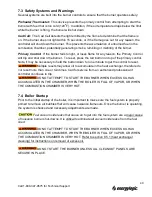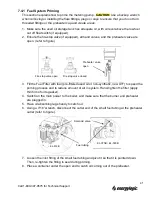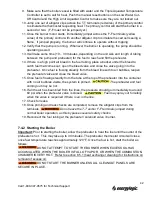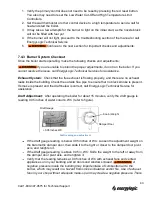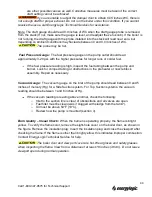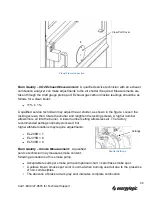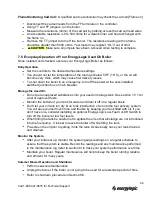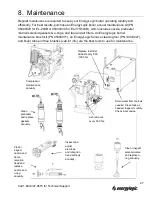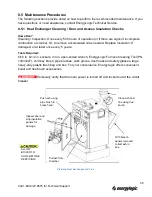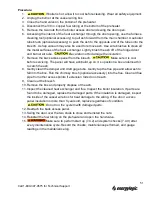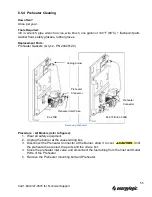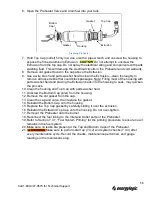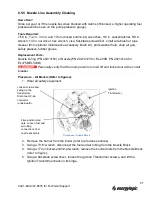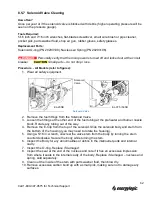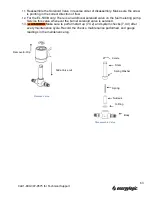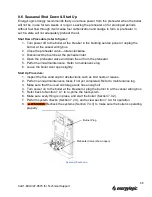
51
Call 1-
800-347-9575
for Technical Support
Procedure:
1.
If boiler is hot, allow it to cool before cleaning. Wear all safety equipment.
2. Unplug the burner at the vessel wiring box.
3. Close the hand valve on the bottom of the preheater.
4. Disconnect the 3/8 in. copper fuel tubing at the bottom of the preheater.
5. Remove the two nuts from the boiler access door and swing the door open.
6. Accessing the interior of the heat exchanger through the door opening, use the furnace
cleaning tool (optional accessory) to pull ash forward from the main chamber. Use boiler
tube brush (optional accessory) to push the ash to the opposite end of the tubes into the
breech. A shop vacuum may also be used to remove ash. Use wire brushes to clean all
the metal surfaces of the heat exchanger. Lightly brush the ash off of the hinged door
and burner air tube.
Be careful not to damage the insulation.
7. Remove the back access panel from the breech.
Make sure it is cool
before servicing. The panel will have ash build up on it, so position a box underneath it
to catch the ash.
8. Gently clean the damper and draft gage tube. Gently tap the flue pipe and allow ash to
fall into the box. Run the chimney brush (optional accessory) into the flue. Clean all flue
pipe from other access points if extension rods do not reach.
9. Clean out the breech.
10. Remove the box and properly dispose of the ash.
11. Inspect the cleaned heat exchanger and flue. Inspect the boiler insulation. If parts are
found to be damaged, replace the damaged parts. If the insulation is damaged, inspect
the inside of the vessel wire box for heat damage to the wiring.
If the door / access
panel insulation is more than 5 years old, replace regardless of condition.
Do not run the system with damaged parts.
12. Reattach the back access panel.
13. Swing the door over the two studs to close and reinstall the nuts.
14. Reinstall the fuel tubing on the preheater and open the hand valve.
15.
Make sure to perform start up (7.4.2) and system checks (7.4.3) after
every maintenance cycle. Record the checks, maintenance performed, and gauge
readings in the maintenance log.




